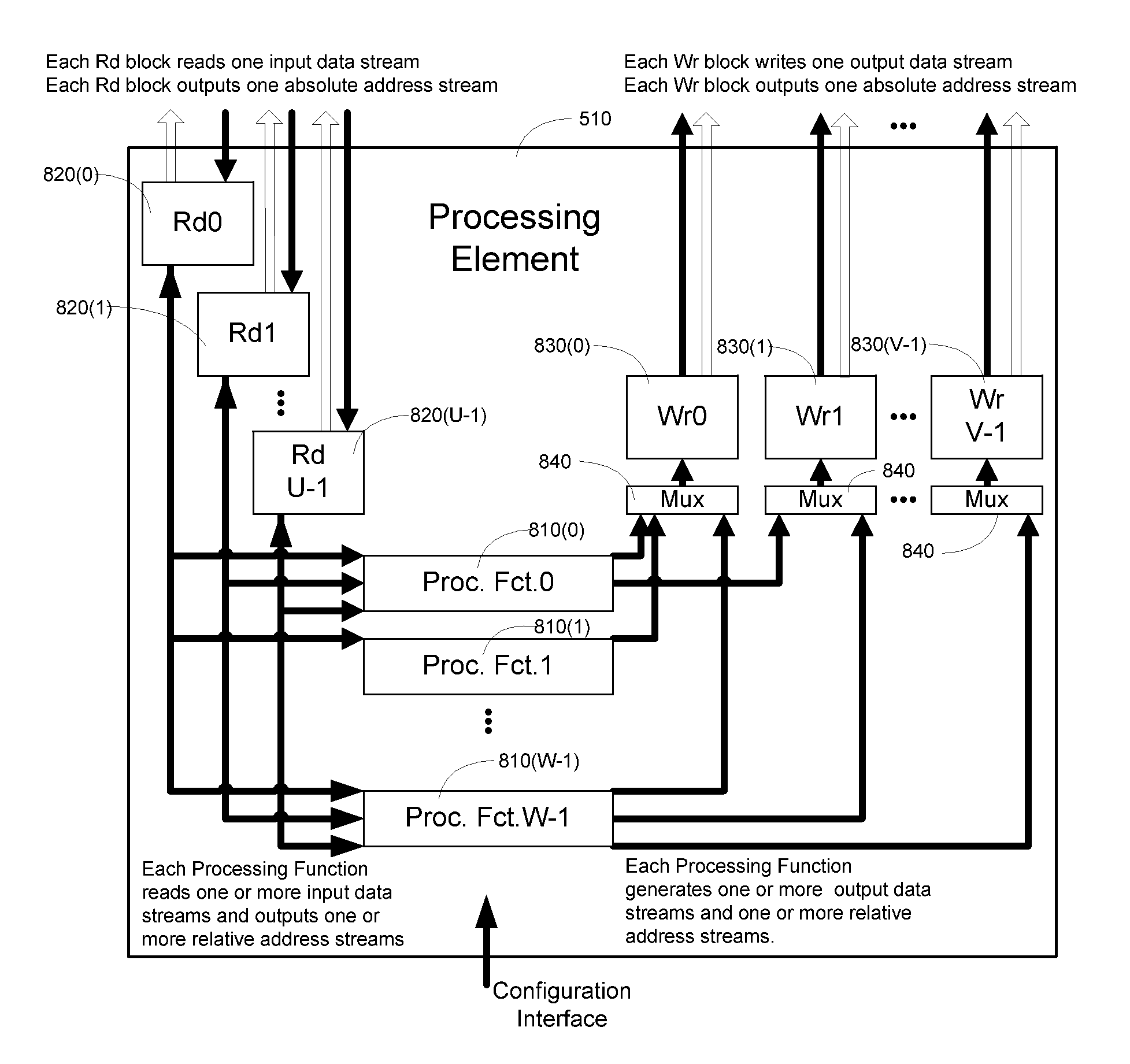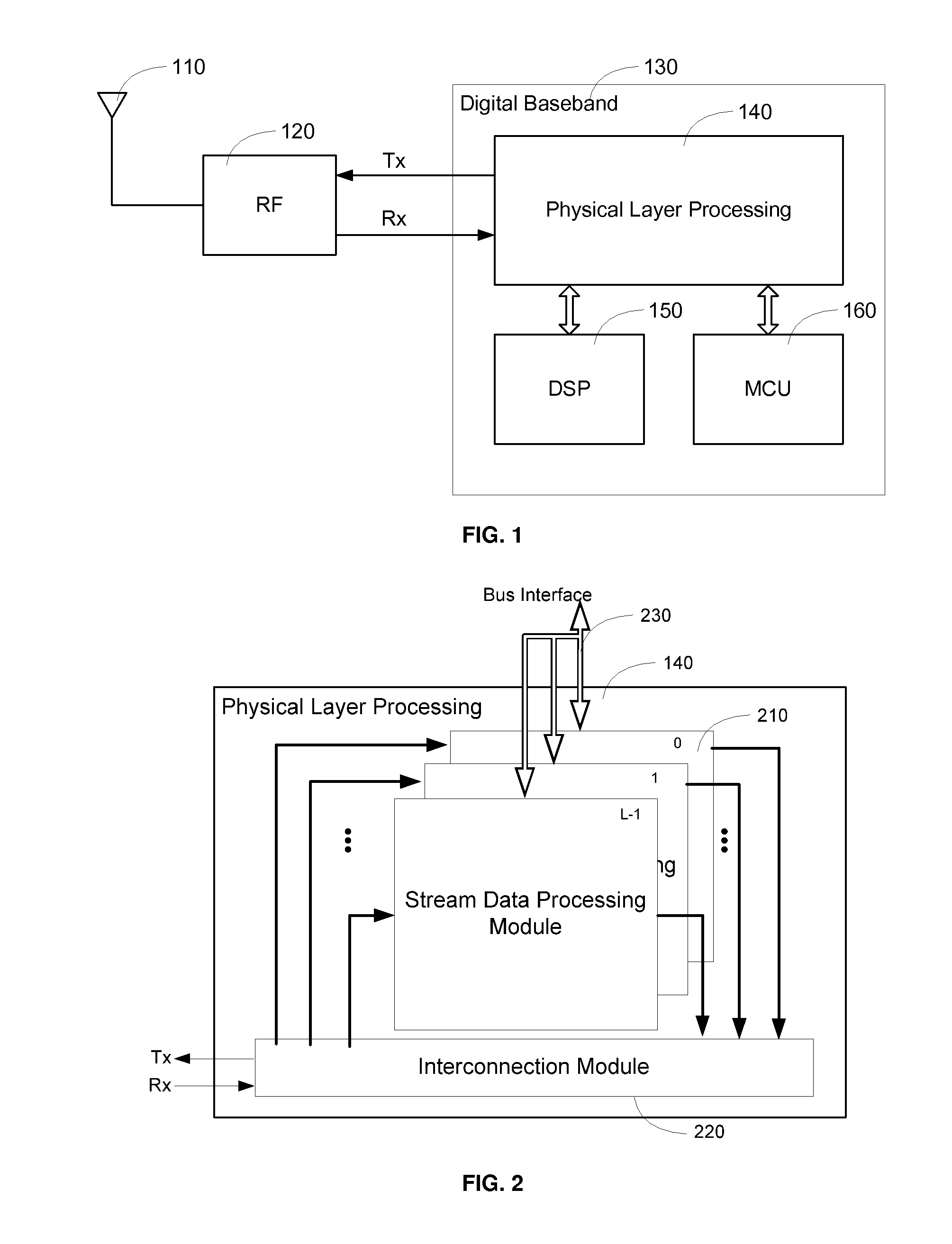Stream data processor
a data processor and data processing technology, applied in the field of data processors in computing systems, can solve the problems of inefficient implementation of data parallelism from instruction code, inability to adapt to the product requirements, and inability to implement software tools that map high level c code to the platform in an efficient way, so as to achieve the best die size and power efficiency, the effect of fast time to mark
- Summary
- Abstract
- Description
- Claims
- Application Information
AI Technical Summary
Benefits of technology
Problems solved by technology
Method used
Image
Examples
Embodiment Construction
[0046]The digital baseband (DBB) part of a User Equipment (UE) handles the digital signal processing required in the physical layer (PHY) of the UE's radio system. FIG. 1 shows a simplified block diagram of a digital baseband solution that may be configured in accordance with embodiments described herein. The antenna 110 and RF module 120 of the UE handle the radio frequency data transmission and reception including up-converting the baseband signal for transmission and down-converting the received signals into a baseband signal. The digital data processing is handled by the digital baseband module 130, which typically comprises a physical layer processing unit 140, a DSP 150, and a microcontroller unit (MCU) 160. The MCU is used to control the functions of the DBB while the DSP is used for further signal processing not handled by the PHY layer.
[0047]In order to achieve the low cost and power consumption required, the digital baseband processing must be optimized for the types of op...
PUM
 Login to View More
Login to View More Abstract
Description
Claims
Application Information
 Login to View More
Login to View More - R&D
- Intellectual Property
- Life Sciences
- Materials
- Tech Scout
- Unparalleled Data Quality
- Higher Quality Content
- 60% Fewer Hallucinations
Browse by: Latest US Patents, China's latest patents, Technical Efficacy Thesaurus, Application Domain, Technology Topic, Popular Technical Reports.
© 2025 PatSnap. All rights reserved.Legal|Privacy policy|Modern Slavery Act Transparency Statement|Sitemap|About US| Contact US: help@patsnap.com



